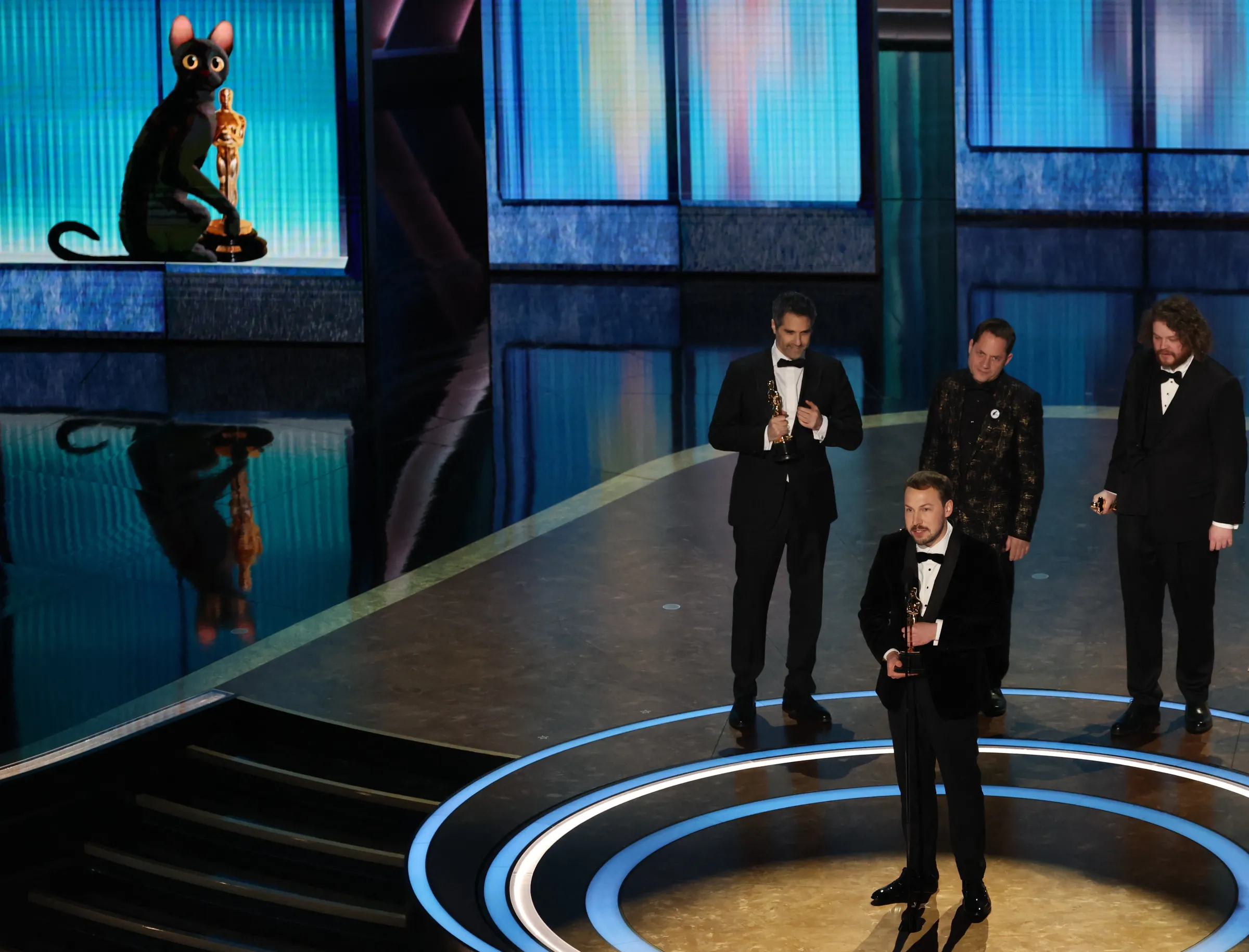Q&A: 'Flow' animation director says AI should be tool, not creator

"Flow" wins the Oscar for Best Animated Feature Film during the Oscars show at the 97th Academy Awards in Hollywood, Los Angeles, California, U.S., March 2, 2025. REUTERS/Carlos Barria
What’s the context?
Indie animated film "Flow" rattles big studios with Oscar win, spotlighting role of new tech in industry under pressure from AI.
BRUSSELS - The wordless adventure of a cat that finds refuge on a boat during an apocalyptic flood, the Oscar-winning animated movie "Flow" has offered hope to an industry grappling with an existential crisis, thanks in part to the use of artificial intelligence.
With a meagre $3.7 million budget compared with Disney's $200 million movie "Inside Out", "Flow" beat industry giants to take home the best animated feature Oscar this year.
The filmmakers rendered the entire film on free open-source 3D modelling software Blender and, in accepting the award on March 2, Latvian director Gints Zilbalodis said he hoped the win would "open doors to independent animation filmmakers."
The Oscar win comes as the industry faces tricky financial headwinds, with culture funding being slashed amid budget cuts in Europe and rapidly evolving AI threatening jobs.
Context spoke to Flow's French animation director Léo Silly Pélissier about the joys and perils of working with new technologies.
Flow is the first independent animated feature to win an Oscar. Have you had a chance to reflect on why this is and what this means for the future of animation?
It's an honest film. It evokes a lot of things at the same time, it allows everyone to create their own story, to propel themselves into this world. We felt this magic worked well with the public.
As it's a low-budget movie, we didn't have the means to promote it. So the win is very positive for the future of the industry, especially for those with a free spirit.
We hope that it can give ideas to other productions, to find smart processes to tell stories. We have a lot of tools that allow us to have creative freedom and methods to speed up the production process, without necessarily using AI, but it's also not something you should fight against.
Your team relied on Blender to make Flow – do you see such tech tools as a democratising force for the animation industry?
We are facing a complicated financial situation in the industry, and a lot is changing in terms of financing, and a lot of processes need to be rethought. So perhaps it is the time for Blender to stand out with a movie like "Flow." The film's success allows us to talk about this free software, which is constantly evolving with the users helping it to evolve, creating this virtuous circle that allows you to do incredible things.
There is much debate about the role of new technologies, especially generative AI in the creative industries. How do you feel about the rise of AI?
Like all artists working in the field, we all have a bit of a question about the future of our profession. The goal for us will be to manage to master the tool as an assistant and not as a creator.
Sometimes, we have methods that take a long time and are very boring to do, and AI can help us improve these kinds of technical or artistic problems.
It can be a very powerful thing to develop ideas. But I often say that constraint increases creativity and creates imagination.
When everything is possible to do, you really have to know what you want as a result and keep the magic and the beauty in creation, that is to say the unknown, the unspoken, the unseen. There is a risk of breaking the subtlety a bit, but it is up to the artist to keep their wits.
What's the next project, and will it use AI?
"Flow" has triggered a wave of projects. Currently I'm working on a project with (French animation legend) Michel Ocelot which will use AI for the final step in the animation process. The style requires an almost acrylic paint look, having that realistic feel while keeping the brush strokes - so that might be a good example of using it as a tool.
This interview has been edited for clarity and brevity.
(Reporting by Joanna Gill; Editing by Ellen Wulfhorst.)
Context is powered by the Thomson Reuters Foundation Newsroom.
Our Standards: Thomson Reuters Trust Principles
Tags
- Tech regulation
- Corporate responsibility
- Tech solutions

















